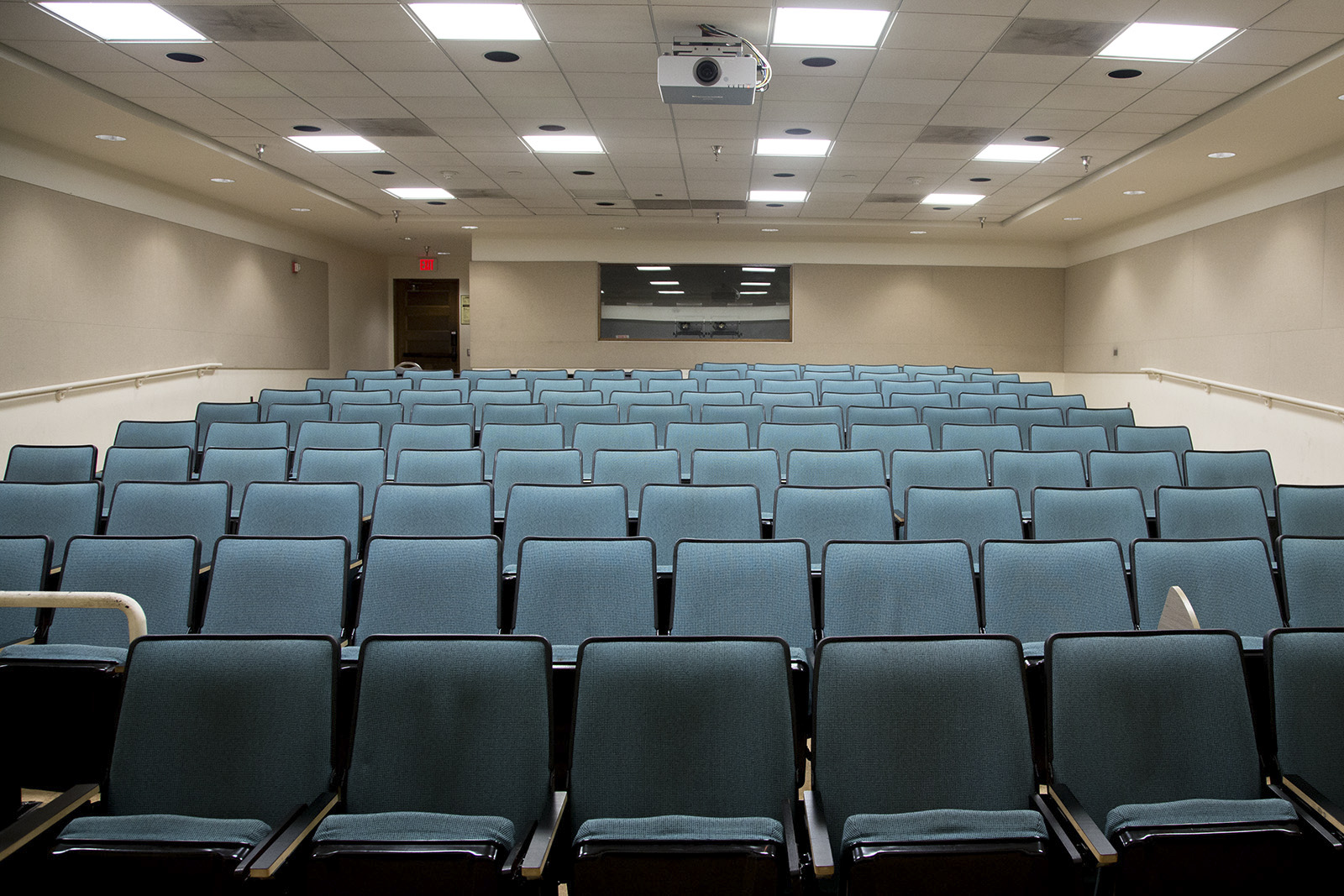Blue book costs should be handled by departments, not students or the university

Blue books will be free for students for the first time next year. But neither UCLA or its students should bear the responsibility of paying for blue books – departments should. (Daily Bruin file photo)
By Mark McGreal
Aug. 4, 2019 11:26 p.m.
I’ve wasted my fair share of spare change buying garage sale clothing on dimes, and tipping nickels just so I wouldn’t have to deal with them anymore.
But my biggest waste of 50 cents is something of an educational necessity for most UCLA students: a blue book.
If you’ve been at UCLA during exam season, chances are you’ve seen a blue book. Essentially, it’s 20 pages of lined paper sandwiched between the two sides of a blue cover – the best testing material money can buy. Students write essays or short answer questions in these exam booklets, turn them in and, sometimes, never see them again.
Up until now, students have shelled out the cash for “required testing materials.” However, in a partnership between the UCLA administration, Associated Students UCLA and the Undergraduate Students Association Council, blue books will be free for the 2019-2020 academic year.
The UCLA administration is contributing next year, but won’t be funding the ambitious endeavor beyond that.
Alas, nothing lasts forever – nothing except UCLA’s willingness to make a buck, that is.
UCLA shouldn’t nickel-and-dime its students over materials that are necessary for test-taking. But this also doesn’t mean UCLA is fully responsible for providing these materials to students. Instead, departments that require students to use blue books and scantrons should take on the cost of the school supplies.
USAC President Robert Watson thinks UCLA wants to provide students with necessary materials like blue books but simply can’t find the resources to do so.
“The university doesn’t have money – the $15,000 the administration is giving came from a financial wellness grant that ends soon,” Watson said. “I don’t think UCLA is saying they don’t want to provide these things to students. I just don’t think they have the resources to.”
While this seems difficult to believe coming from a school with a yearly budget of over $7 billion, as well as a recent multimillion-dollar increase in state funding, other expenses may be more important to the university.
Assuming that UCLA really doesn’t have the money to fund the free blue book program in perpetuity, charging USAC with the task of finding that money makes sense – if every student needs a blue book.
But not every student needs one.
Natalie Aranda, a rising fifth-year ecology, behavior and evolution student, said she probably won’t be using a blue book next year because her classes don’t require them.
“I’ve been here for four years, and I can count on one hand the amount of times I’ve actually used a blue book,” Aranda said.
If not every student is using the blue books, then it doesn’t seem fair that the university, USAC or ASUCLA pay for the cost of the materials either. These organizations are meant to save their money for things that affect all of the students on campus, not just those tasked with writing essays and short answers.
And even if UCLA agreed to cover the costs, students like Aranda could end up paying the price for something they will never use.
$15,000 for blue books puts UCLA on the precarious edge of scarce funding – and UCLA is no stranger to bumping up tuition or slipping in student fees.
The UC system just raised tuition for out-of-state students by $762 in May to fill a $30 million hole in the UC budget. UCLA students already pay fees with little idea about where their money goes and adding more would force students to further tighten their belts.
Not to mention, adding online fees defeats the purpose of giving away blue books at all.
“If a department wants you to take a test while using a blue book, they should pay for it,” said Hamlin Liu, a rising second-year computer science student. “Then it only affects those who use them.”
Writing and humanities classes require blue books on final exams far more often than math and computer science classes do. Indiscriminately giving out scantrons and blue books will not help every student, but it doesn’t have to hurt every student either.
Clearly, blue books cost very little for individual students – forking over two quarters is more of an annoyance than a back-breaking financial burden for most. But for those who spend every dollar they have on essentials such as food and rent, every penny counts. And with students already overwhelmed by additional fees ranging from textbooks to lab coats, it is by no means unreasonable for departments to spare the extra cash.
At best, the current initiative could help a handful of students and hurt the rest. But as it stands, the best case scenario doesn’t sound like one.
After all, spare change should be going toward the little things in life – not toward another reminder of finals season.


